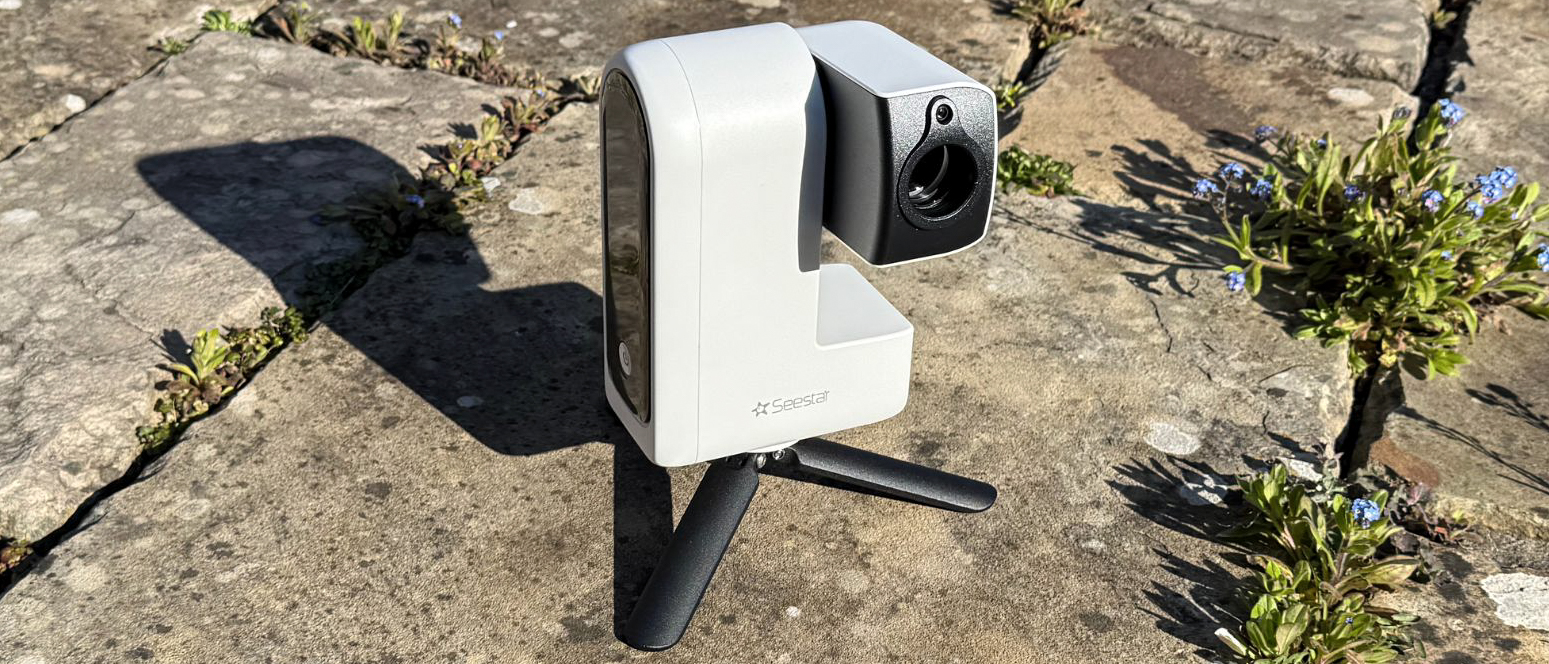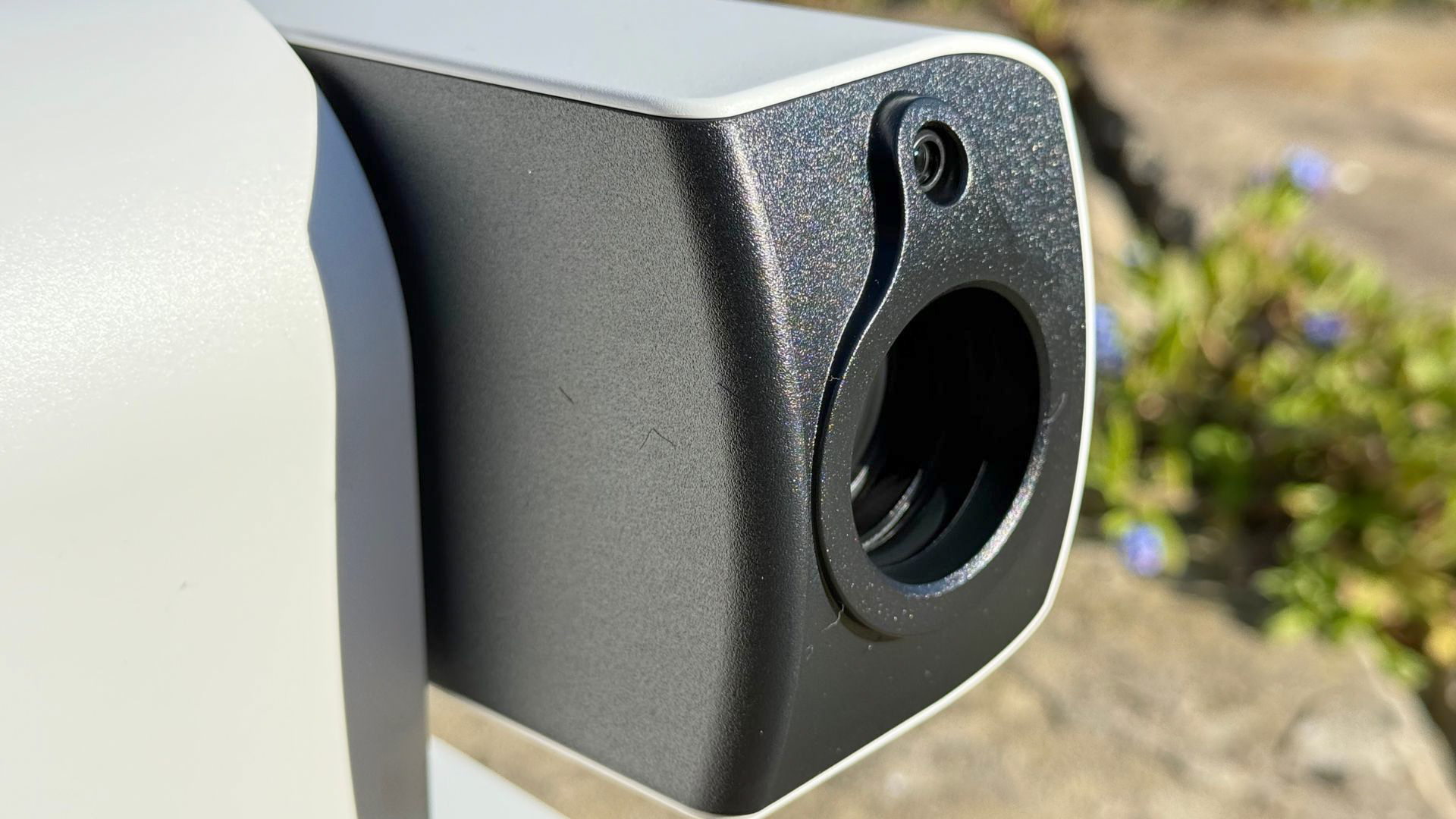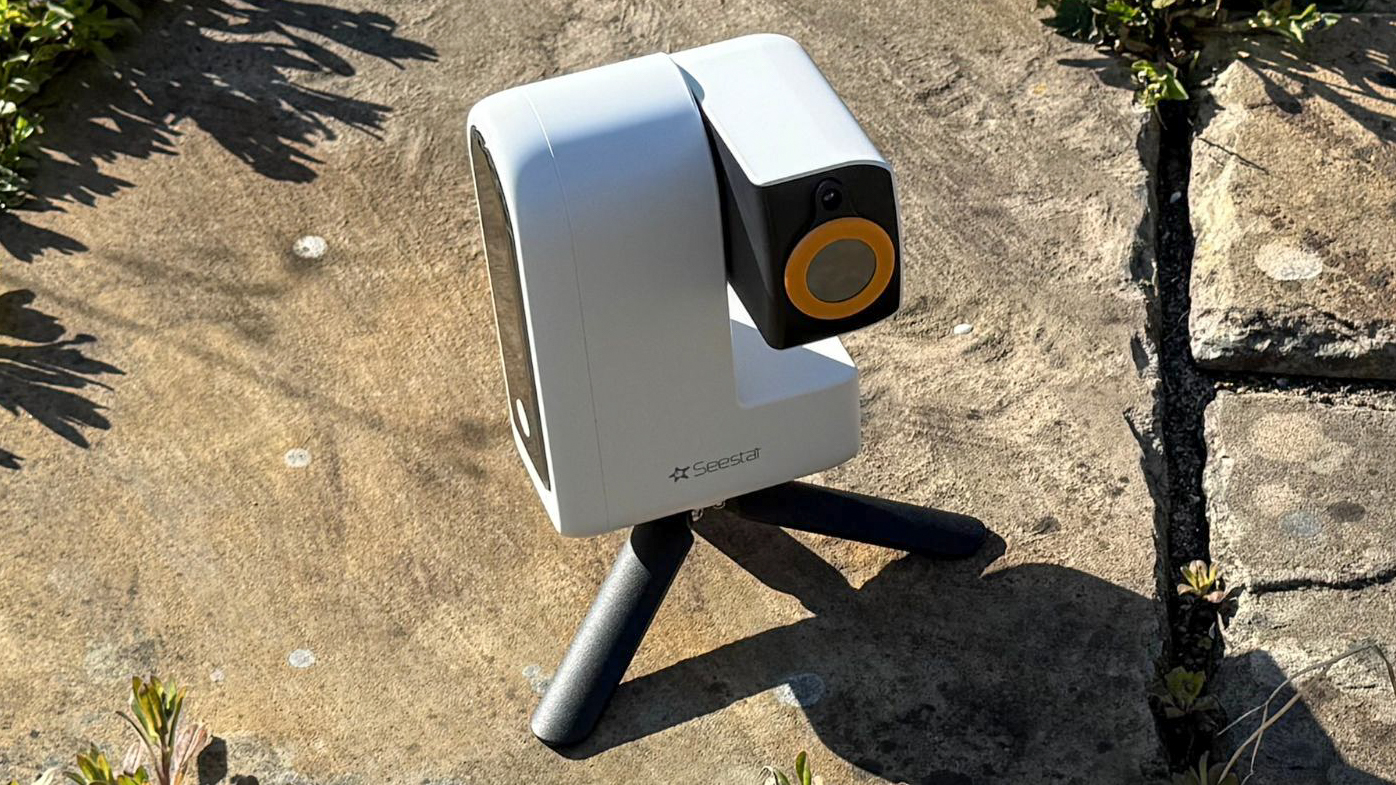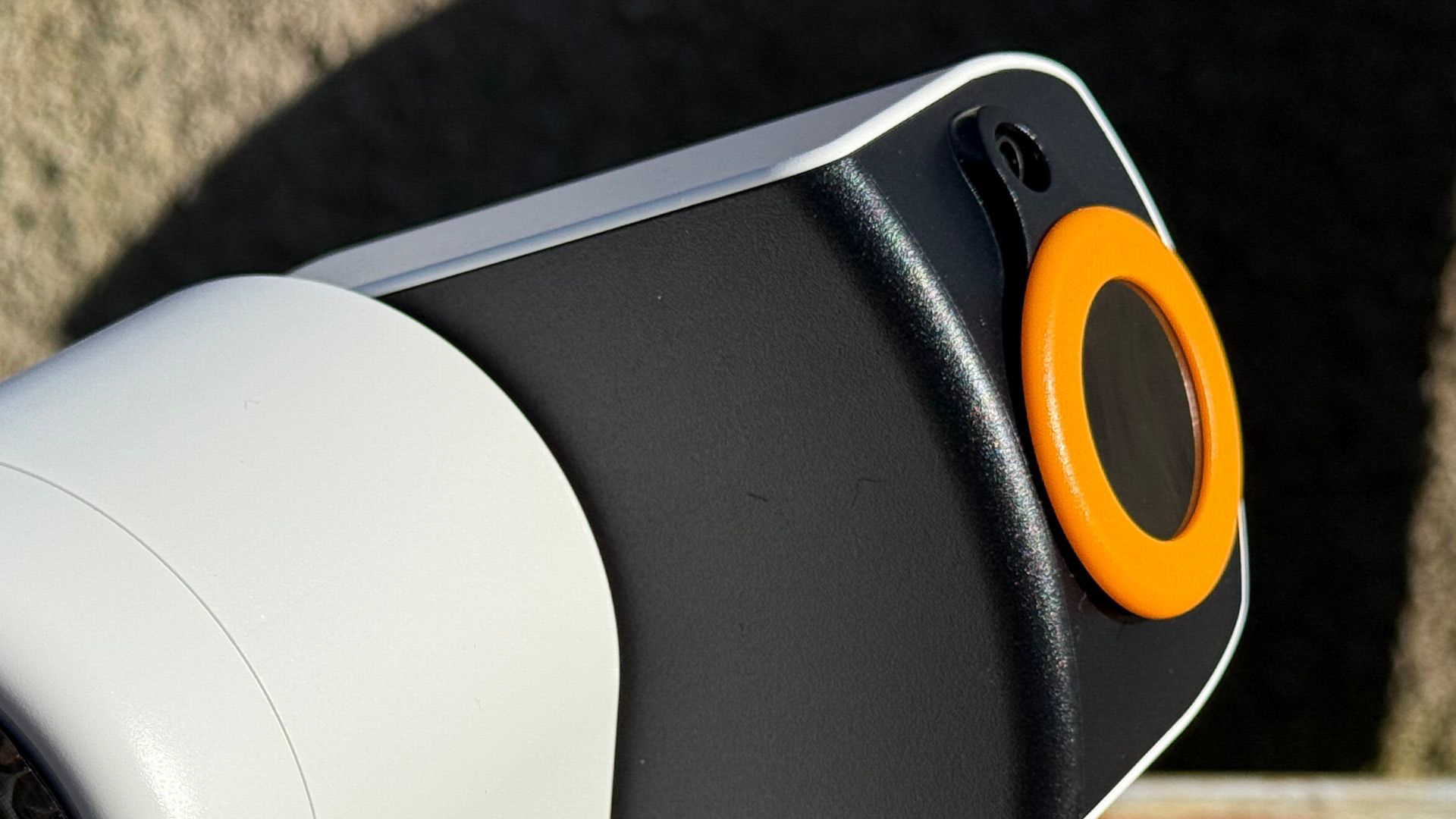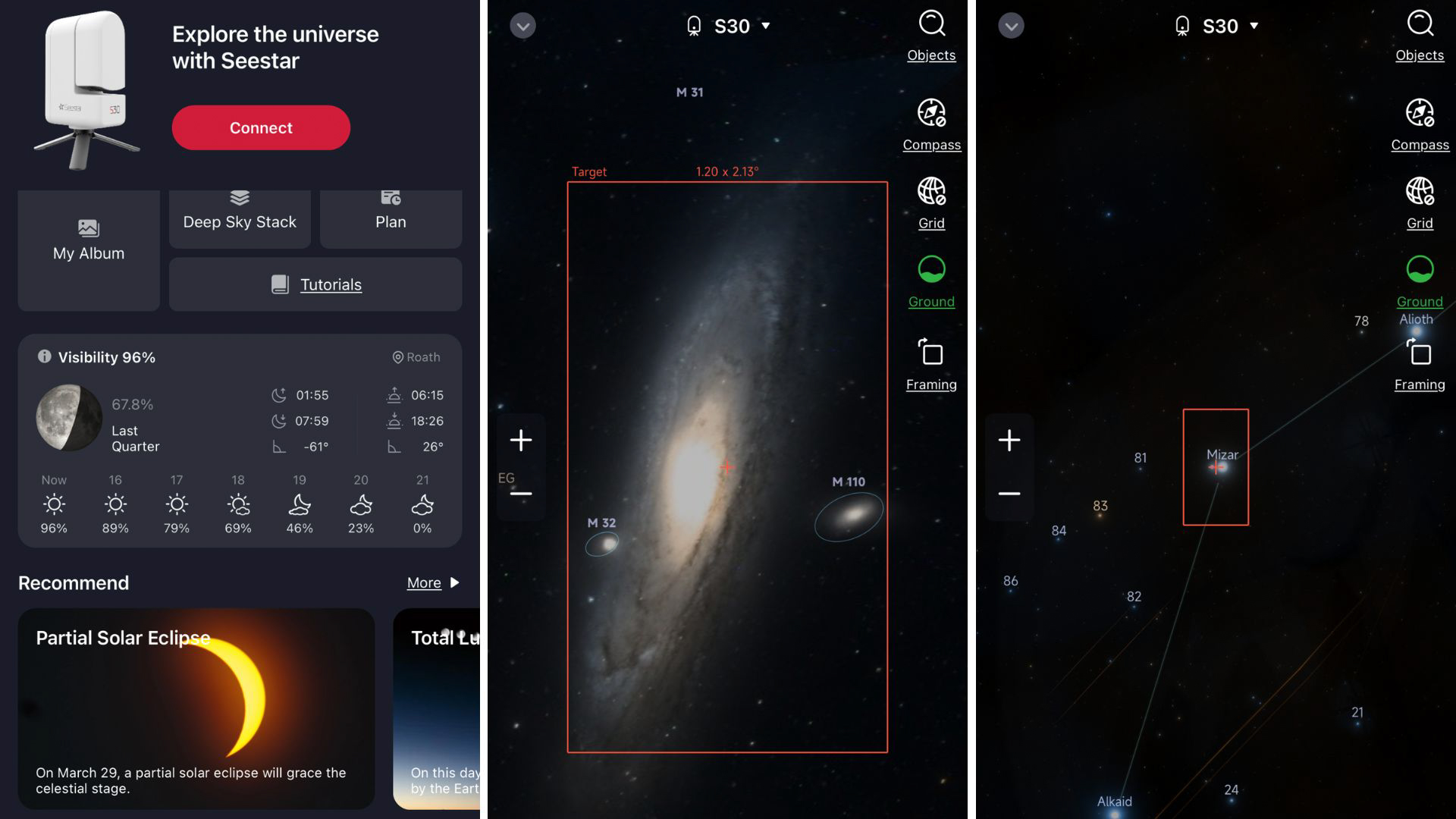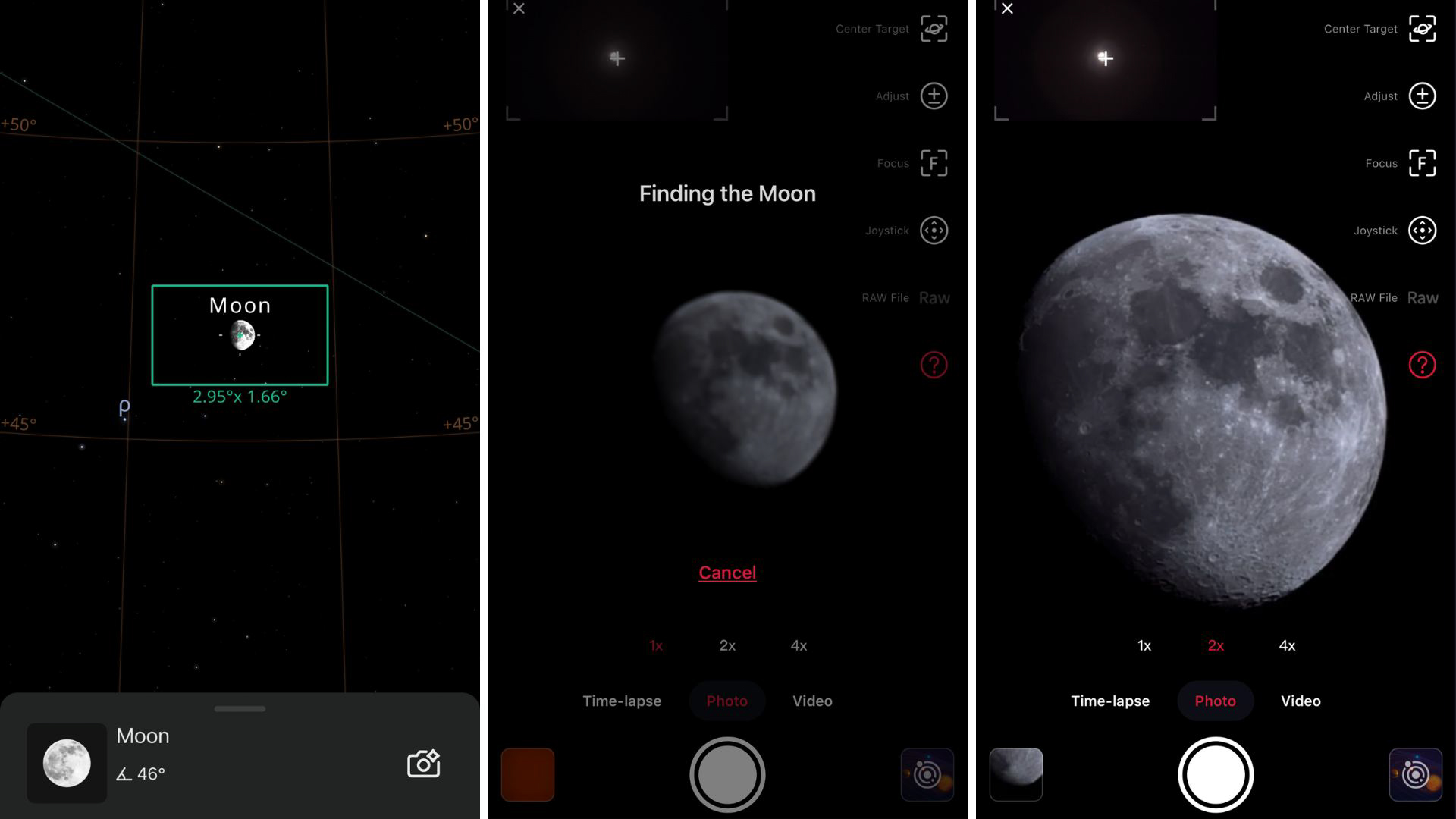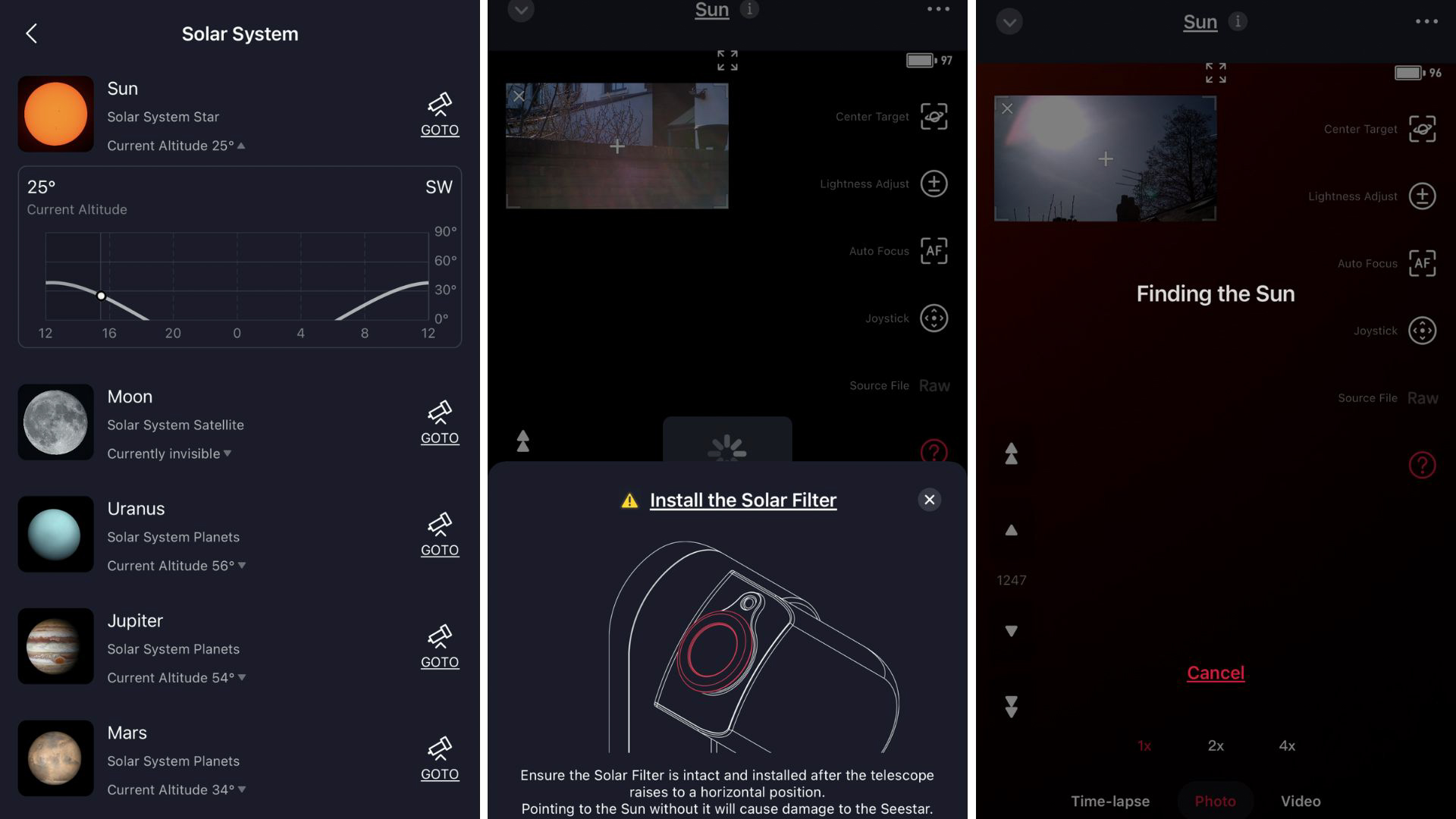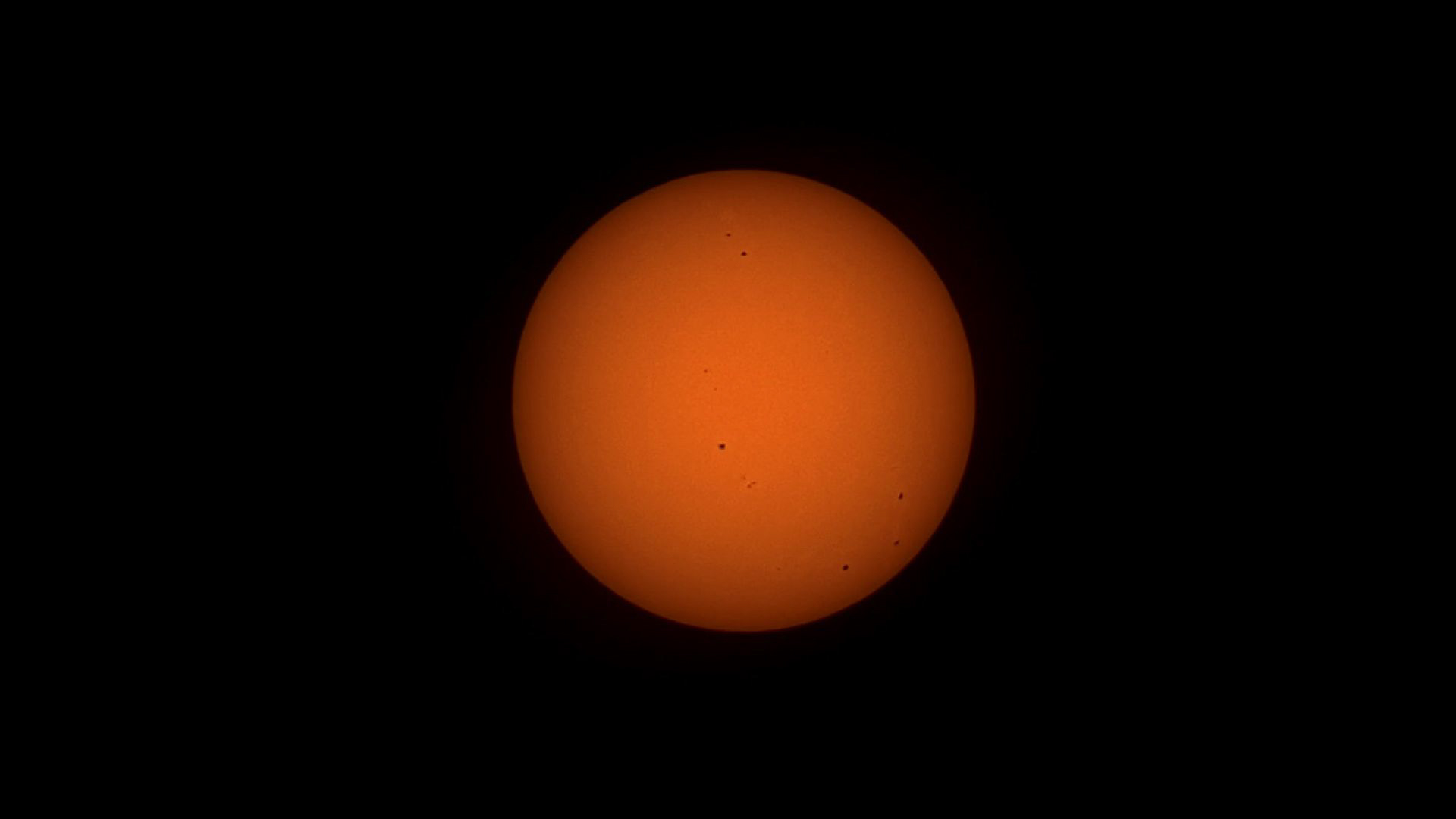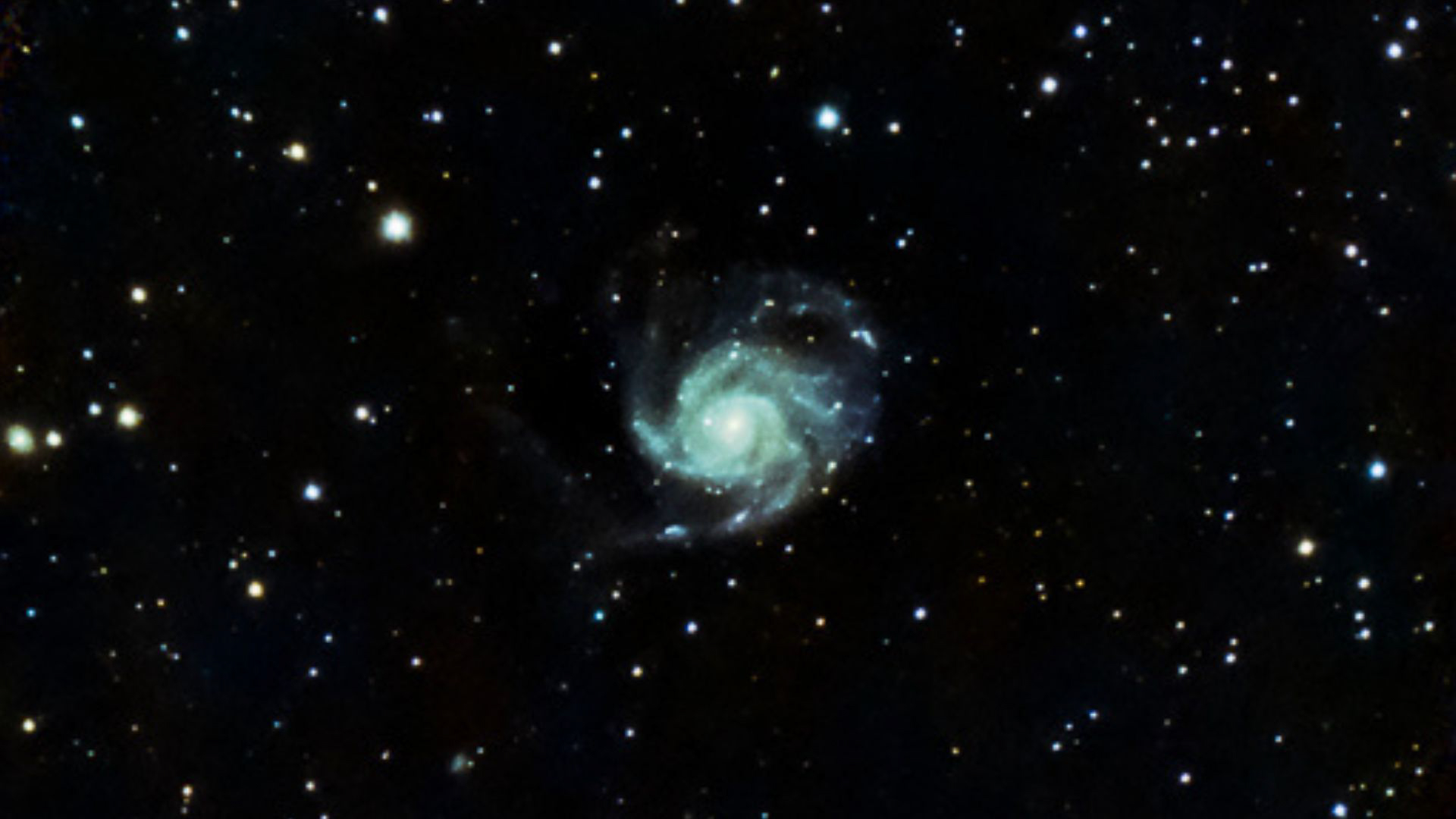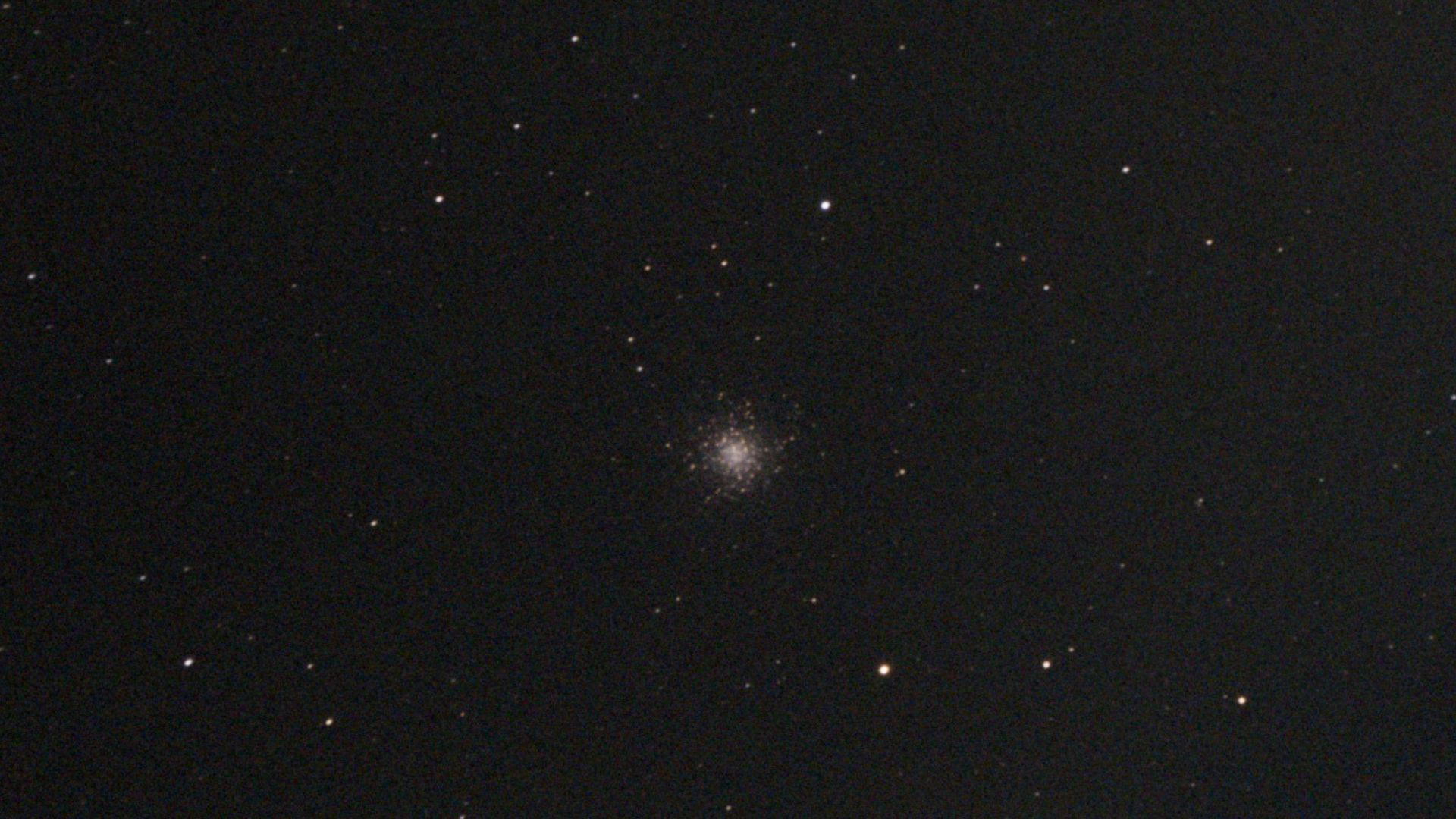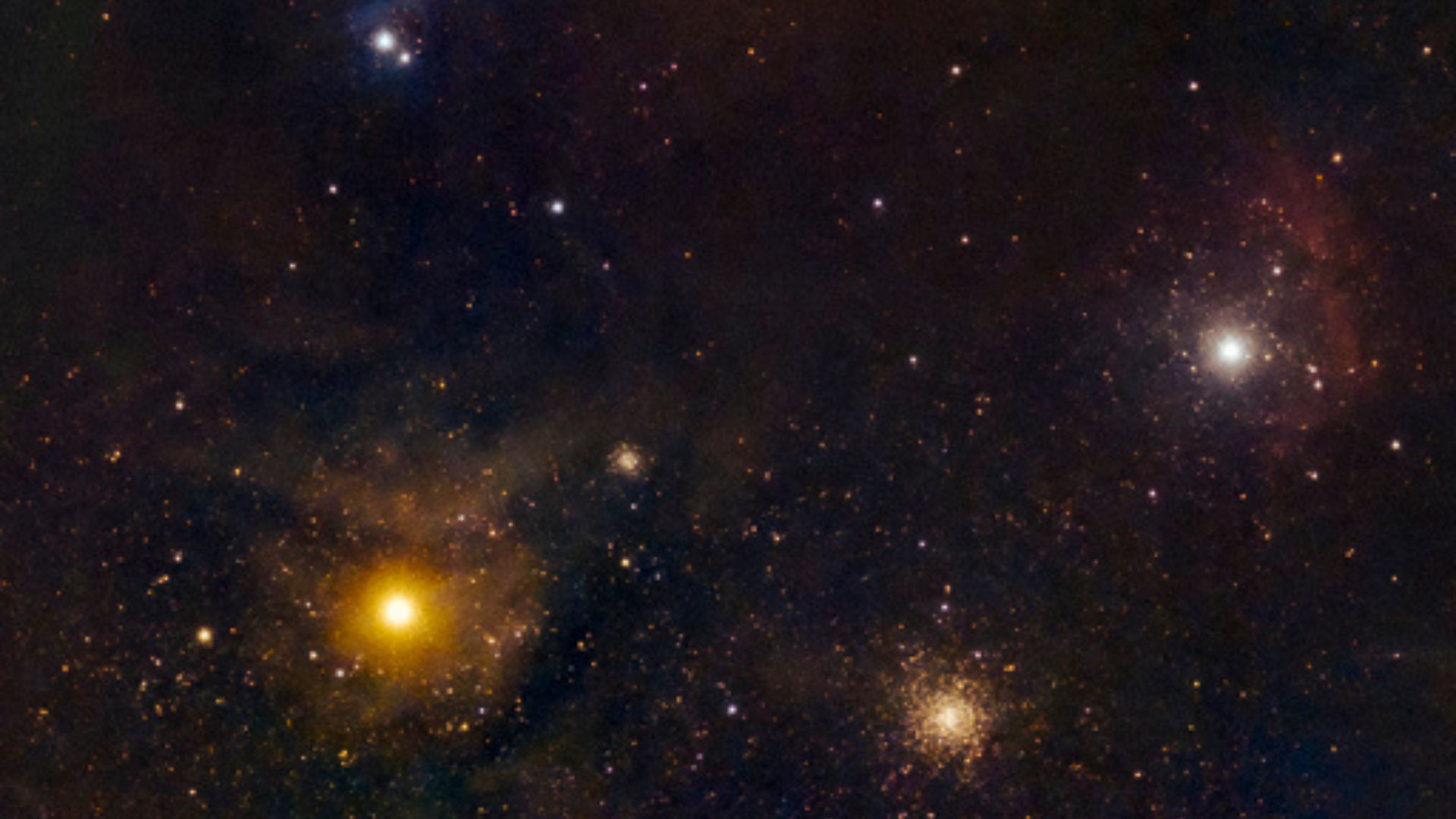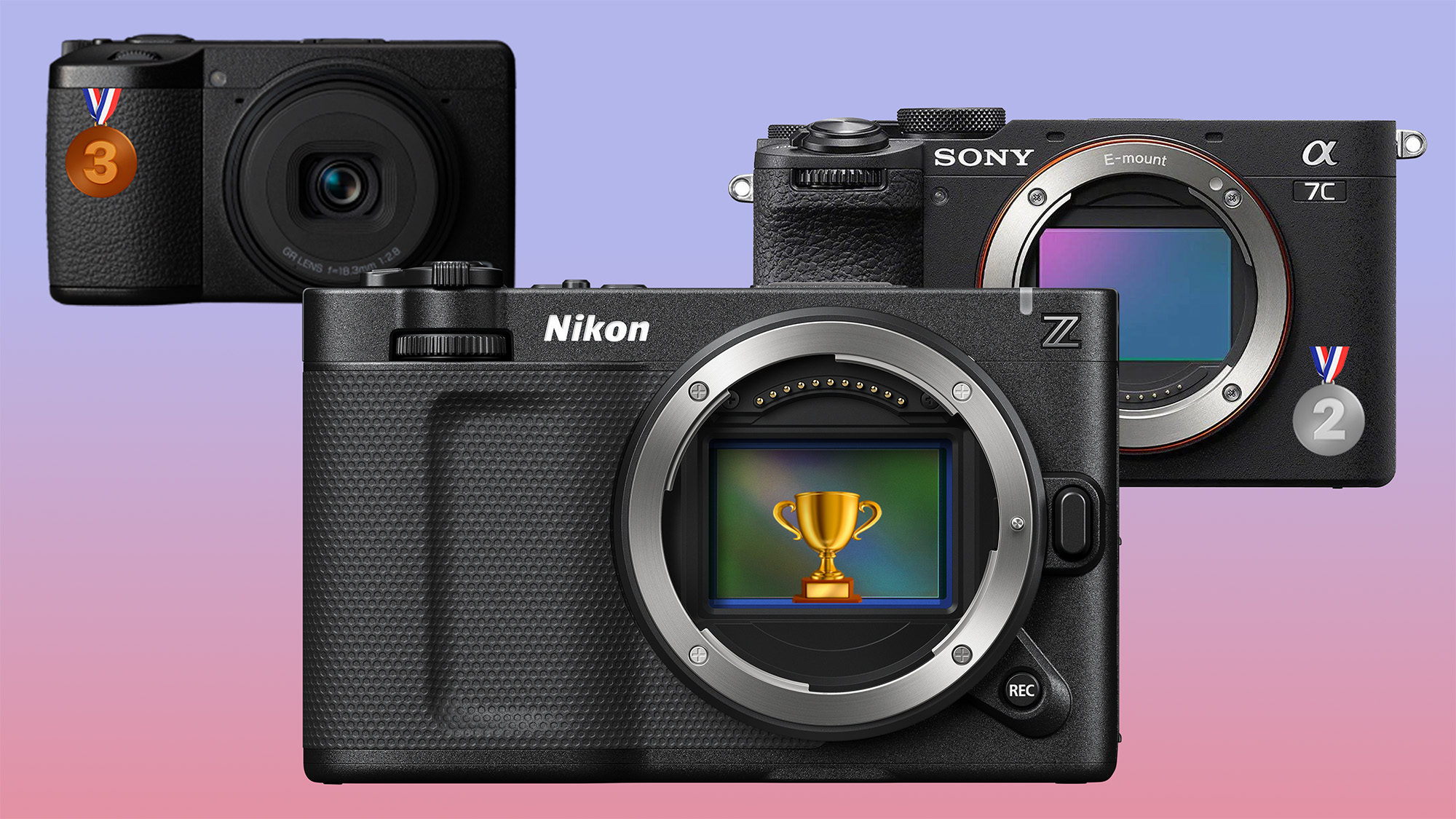Digital Camera World Verdict
The Seestar S30 is a tempting smart telescope for photographers eager to explore astrophotography without the usual expense and complexity. It isn’t going to replace high-end gear for seasoned astronomers, but its compact size, easy app control and dual-lens array make it an ideal entry point.
Pros
- +
Fits in most camera bags
- +
Dual-lens for day and night use
- +
User-friendly app
- +
Built-in filters
- +
Magnetic solar filter
Cons
- -
Not ideal for detailed planetary imaging
- -
Limited resolution compared to other smart telescopes
- -
Relies on smartphone app
- -
Frequent data downloads are required
Why you can trust Digital Camera World
If you’ve been thinking of getting into astrophotography but the expense and the need for telescopes, laptops and gear galore puts you off, check out the SeeStar S30. Small enough to pack alongside a DSLR or mirrorless camera in a photography backpack, this smart telescope is more lens-sized than telescope-sized, and is designed to put deep-sky photography in reach of absolute beginners.
Built by Chinese company ZWO — a respected name in specialist astrophotography cameras — and a follow-up to the larger Seestar S50, this diminutive smart telescope is built around a smaller 30mm/1.18 inch aperture refractor telescope. Automatically slewing to, and taking image after image of, deep-sky objects, it auto-stacks to remove noise and creates colorful images of galaxies, star clusters and nebulae. What’s the catch?
ZWO Seestar S30: Specifications
| Sensor | Sony IMX662 |
| Resolution | 1920 x 1080 (both lenses) |
| Aperture | 30mm/1.18 inches |
| Focal ratio | f/5 |
| Focal length | 150mm/5.9 inches |
| Optical lens | Apochromatic triplet with ED glass |
| Storage | 64GB eMMC |
| Connections | USB-C, Bluetooth and WiFi |
| Mount | Alt-azimuth |
| Battery capacity | 6,000 mAh |
| Weight | 1.65 kg/3.6 lbs |
| Dimensions | 210mm x 140mm x 80mm/8.27x5.51x3.15 inches |
ZWO Seestar S30: Price
The first generation of smart telescopes, from Unistellar and Vaonis, were large and expensive high-end objects, but in the last few years the trend is to the small and affordable — and that trend surely finds its peak with the SeeStar S30.
At around £419 / US$399 / AU$699, it’s the most affordable smart telescope yet, undercutting the similarly sized Dwarflab Dwarf 3 (UK£492 / US$599 / AUS$811). Until recently, the most affordable smart telescope around was ZWO's SeeStar S50, at around £539, US$499 and AU$949.
ZWO Seestar S30: Design & Handling
A small telescope with a CPU and a 64GB flash drive attached, the Seestar S30 is all an incredibly lightweight all-in-one astrophotography rig that’s exclusively controlled by a smartphone app. After selecting an object either from a list of recommended targets or from a planetarium-style virtual atlas, it auto-aligns and then tracks objects, taking away some major pain-points for beginners who don’t yet know the night sky.
There’s more to the Seestar S30 than night photography. Its dual-lens telephoto and wide-angle system allows for both telephoto and wide-angle imaging, allowing both photos and videos in daylight and, once darkness falls, the ability to easily locate, say, the moon in the sky.
At its core, the Seestars S30 is a 30mm/1.2 inch refractor that records images using its high definition-capable Sony IMX662 sensor, stacking and integrating them as it observes to create an ever-changing, ever-improving image.
The best camera deals, reviews, product advice, and unmissable photography news, direct to your inbox!
It comes with a USB-C cable to recharge its six-hour battery and a surprisingly compact tabletop tripod, as well as a handy magnetic solar filter for imaging sunspots on the solar surface. The product as a whole is so compact and lightweight that you could be forgiven for thinking that it’s a novelty, but there are some advanced features. Perhaps the standout feature is framing mode, which allows the telescope to pan, rotate and stack images over several hours to create mosaic images of the larger celestial structures, such as the Andromeda Galaxy. It also includes built-in UV/IR cut and dual-band filters that help it image nebulae even when drowned in light pollution, while the app has AI noise reduction built-in.
Weighing just 1.65 kg and measuring 210mm x 140mm x 80mm, the Seestar S30 is remarkably portable. Its compact size allows it to fit comfortably in most camera bags, making it an excellent companion for photographers on the go. Eclipse chasers, in particular, should consider it for global travel — with the easily removable magnetic solar filter a particular attraction.
Build quality is reasonable, with a tough plastic chassis and an aluminium tripod. It’s a tiny support; you’d be better off mounting the Seestar S30 on a proper photographic tripod to give it some height (it has a standard 1/4-20 tripod thread), particularly if you want to use it in a crowd.
That chassis is adorned only with an on/off switch and a USB-C slot for recharging. All other controls are in its smartphone app, which worked well during our test. After selecting the first target, the Seestar S30 paused briefly to align itself with the stars it could see, plate-solving them with what it has in its database. It’s impressive stuff, though we did notice that it required a hefty 160MB data download to allow its sky atlas to be used. Paired with its propensity to require frequent firmware updates and we’d recommend powering up the Seestar S30 for a brief dry run to make sure it’s packed with the latest firmware before driving out to find dark skies.
ZWO Seestar S30: Performance
In the field, the S30 is an impressive performer — especially when you consider how compact and automated it is. First, I imaged the sun, which was a point and shoot affair that required using a virtual joystick to zero-in, using an inset image from the wide-angle lens for context.
Setting it up at night involves placing it on the tripod, powering it on, connecting a smartphone then picking a target in the app. The telescope then plate-solves, slews to the object, focuses, and begins capturing and stacking frames automatically. The longer it’s left for, the more images it takes, and the better the result.
I tested with the help of Stéphane Picard at Cliff Valley Astronomy, shooting the deep sky from Broadleaf Ranch, a Dark Sky Destination in New Brunswick, Canada. The S30 was left to capture the Pinwheel galaxy (M101), with no filters, for 50 minutes. The result — once processed lightly in Siril, Photoshop and LightRoom — shows the tenuous spiral arms of the outer galaxy. Next up was the Horsehead Nebula and Flame Nebula in Orion with similarly spectacular results. Finally, an early rise to point the the S30 at the Antares/M4 region in Scorpius, using the framing mode and 75 minutes of integration, resulted in a gloriously colorful image complete with dust lanes.
The Sony IMX662 sensor captures high-quality images with minimal noise, and can be left alone to shoot while you do something else, which is always welcome if you’re kind of astrophotographer that likes to have multiple projects going on simultaneously.
What the S30 lacks is ultimate resolution — the images you get are fairly small — while its alt-az mount restricts exposure lengths. It’s also not adept with planets. However, its limited field-of-view, which could be a shortcoming, is mitigated by its framing mode.
ZWO Seestar S30: Verdict
So easy to use is the Seestar S30 that it’s tempting to state that it’s all about point, shoot and share, but there’s a lot of explore for anyone interested in doing serious astrophotography. Sure, the images you end up with won’t be particularly high resolution, but with many hours of integration and some time spent in post-processing, it’s possible to produce spectacularly colorful images to be proud of. Add the new framing mode, and the beautiful sun and moon images it’s capable of, and the Seestar S30 begins to look like the kind of tool that should be in the camera bag of every outdoor photographer.
| Features | An ultra-portable, beginner-friendly feature set that makes astrophotography simple, accessible, and surprisingly powerful. | ★★★★☆ |
| Design | A sleek, minimalist design that’s lightweight, durable, and compact enough to fit in a camera bag, making it ideal for travel and on-the-go stargazing | ★★★★☆ |
| Performance | Impressive wide-field astrophotography with automatic alignment and stacking, though its short exposures and modest resolution limit fine detail and planetary imaging. | ★★★★☆ |
| Value | With an excellent balance of portability, ease of use, and smart features at an affordable price, it’s a standout entry-level option. | ★★★★★ |
✅ Buy this if...
- It’s the most affordable smart telescope to date.
- It performs well with the sun and moon.
🚫 Don't buy this if...
- It lacks the resolution of other smart telescopes
Alternatives
Check out our full guide to the best smart telescopes

Jamie has been writing about photography, astronomy, astro-tourism and astrophotography for over 15 years, producing content for Forbes, Space.com, Live Science, Techradar, T3, BBC Wildlife, Science Focus, Sky & Telescope, BBC Sky At Night, South China Morning Post, The Guardian, The Telegraph and Travel+Leisure.
As the editor for When Is The Next Eclipse, he has a wealth of experience, expertise and enthusiasm for astrophotography, from capturing the moon and meteor showers to solar and lunar eclipses.
He also brings a great deal of knowledge on action cameras, 360 cameras, AI cameras, camera backpacks, telescopes, gimbals, tripods and all manner of photography equipment.
You must confirm your public display name before commenting
Please logout and then login again, you will then be prompted to enter your display name.
